How 'The Little Hours' DP Used 'Crazy Rigs' to Recreate Film School on an Unpredictable Set
'The Little Hours' cinematographer Quyen Tran explains how she rigged crazy setups for Jeff Baena's film.
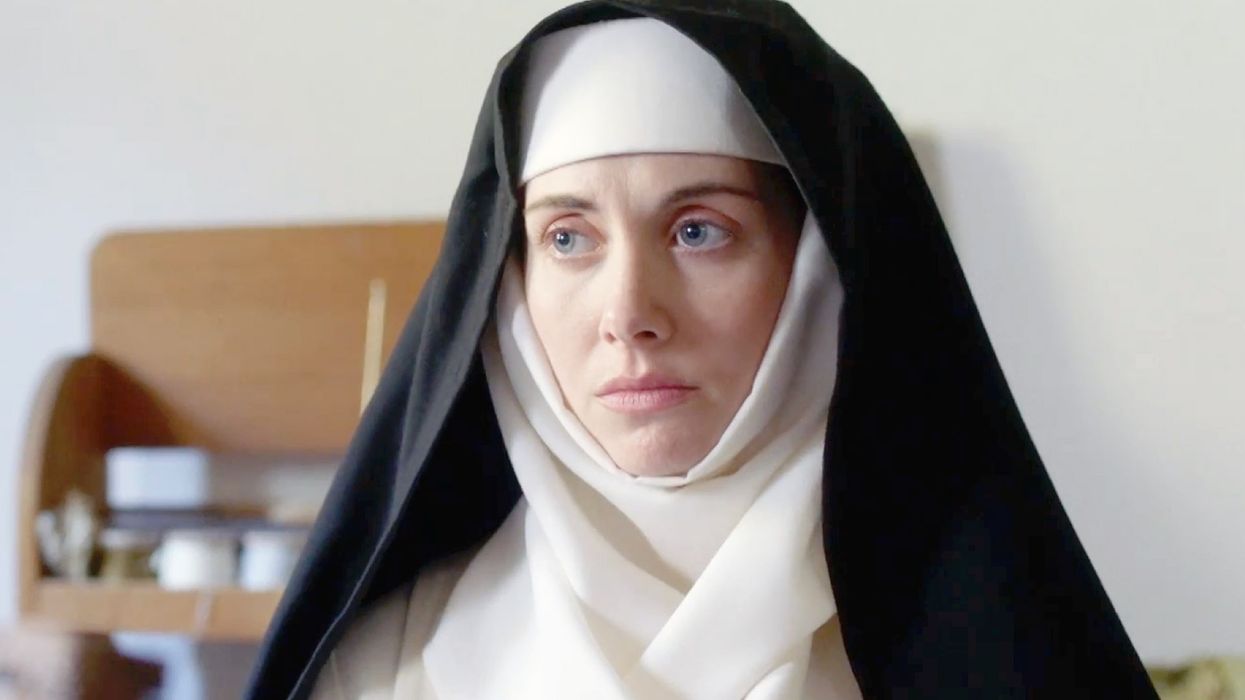
It’s rare to find a comedic film that matches its clever wit with a sense of cinematic beauty, so when a movie like The Little Hours hits the big screen, audiences will long for more of the unique vision that DP Quyen Tran and director Jeff Baena have crafted. Put together on a tiny budget, Tran made sure that every ounce of her effort went into making the insanity of this 14-century convent come to life in a way that felt authentic to the period, while also maximizing the comedic talents of an incredible cast.
Tran’s upbringing has always attracted her to unique stories, and the insanity of Baena’s The Little Hours was something that she immediately knew would be right up her alley. As a Vietnamese-American woman, Tran has always had somewhat of an uphill battle to find her place in Hollywood, but after having worked as a photojournalist and cinematographer for shorts, documentaries, and narrative features, Tran is finally shedding her self-professed status as an “aspiring DP,” thanks to her gorgeous work on this film.
"Growing up, I didn’t have a lot, but what I had was the cinema."
The Little Hours stars Dave Franco as a runaway servant posing as a deaf-mute who must maintain his cover while simultaneously managing the romantic advances of a trio of nuns, played by Alison Brie, Aubrey Plaza, and Kate Micucci. John C. Reilly, Molly Shannon, Nick Offerman, Fred Armisen, and others co-star in this improvised period piece comedy.
No Film School spoke with Tran prior to the release of The Little Hours about utilizing her eclectic background, maximizing the value of your gear on a small budget, and letting the story lead the way.
No Film School:Let’s go ahead and start at the beginning for The Little Hours. How did you come on board the production?
Quyen Tran: I knew that Jeff Baena wasn’t interviewing people through agencies. He was looking to find a DP through a referral. We had a lot of mutual friends, and I had shot a short film called Smilf for this wonderful up-and-coming director, Frankie Shaw, and she’s friends with Jeff, so she recommended me. It was just a cold interview and we hit it off. We decided to go to Italy together and make a crazy movie.
NFS: What camera did you shoot on?
Tran: Jeff was very keen on shooting 4K. I would have loved to shoot with the Alexa, but when we got to Italy, they didn’t have the Alexa XT. So I did more research and found out that we could shoot 3.8 UHD on the Amira, which Jeff thought was acceptable. [Laughs] As DPs, we’re always trying to bring the director’s vision to life and to give them what they want.
"You should really work on your ballet skills if you’re trying to operate on a Dana Dolly."
I find the Amira to be incredibly ergonomic. It’s designed like an ENG camera, so it’s meant to be very handheld, and with the internal ND filtration, that just means that you can increase the amount of glass in front of the lens. That’s fantastic.
For lenses, we shot on the Cooke S4s, which are beautiful. I’ve shot many films on them and they always deliver. I was operating everything myself and only had a Dana Dolly. You should really work on your ballet skills if you’re trying to operate on a Dana Dolly [Laughs].
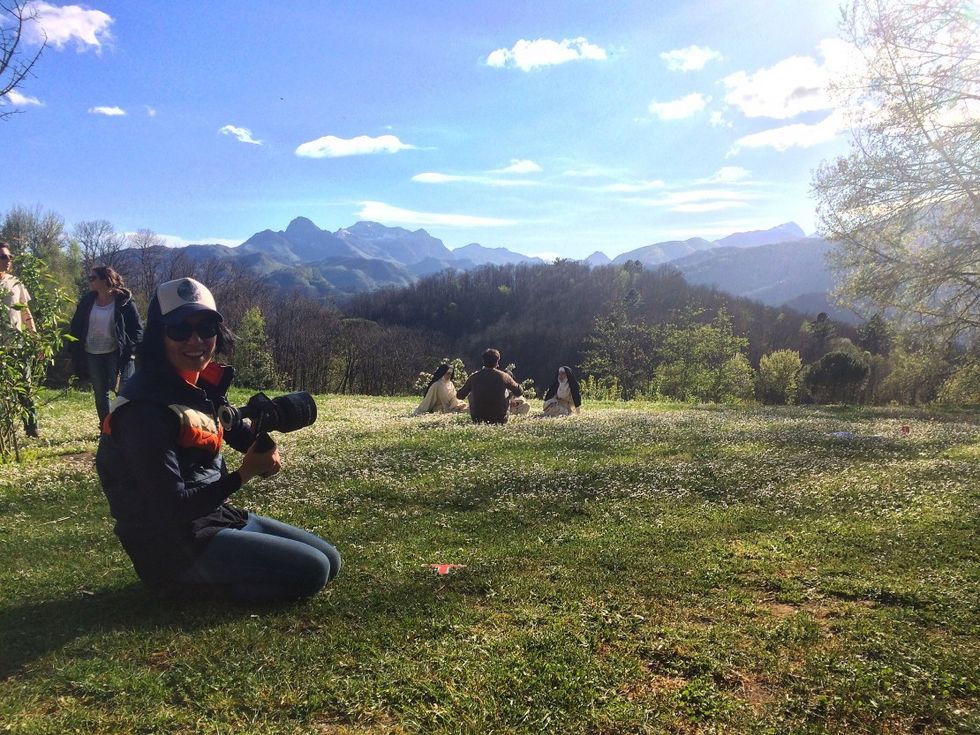
NFS: What was it that stood out to you in the script that you wanted to translate from the page to the screen?
Tran: Well, there was no script. There was an 18-page outline. And for example, it would read “the witches dance around the fire. All hell breaks loose.” Okay, great [Laughs].
There was a lot of room left for interpretation. We had these awesome actors who were such incredible improvisers, and since we were only shooting single-camera I wanted to make sure that in the blocking I was able to capture as much of the dialogue between the actors as possible. It was like film school again, except with all these amazing actors.
"There was no script. There was an 18-page outline. It would read, 'The witches dance around the fire. All hell breaks loose.'"
I looked at a lot of art from the 14th century, and I wanted to replicate some of those images from those paintings. A lot of them have very wide, stacked shots with a lot of action happening in one frame. I didn’t want the film to look two-dimensional, but I wanted to make sure that we had those wide vistas. That really helped with being able to capture the actor’s performances and not having to go back to coverage.
NFS: It looked like you planned for a lot of natural lighting as well.
Tran: Yes. During our location scouting I took really meticulous notes on the direction of the sun, and then I worked with scheduling so that we would be shooting at the right time of day for certain scenes because I didn’t have all the equipment to control the harsh light. If we had a location where there was an interior as well, I would shoot exteriors in the morning, go inside at high noon, and then go outside again later in the day so that I would capitalize on the rising sun and then the low-setting sun.
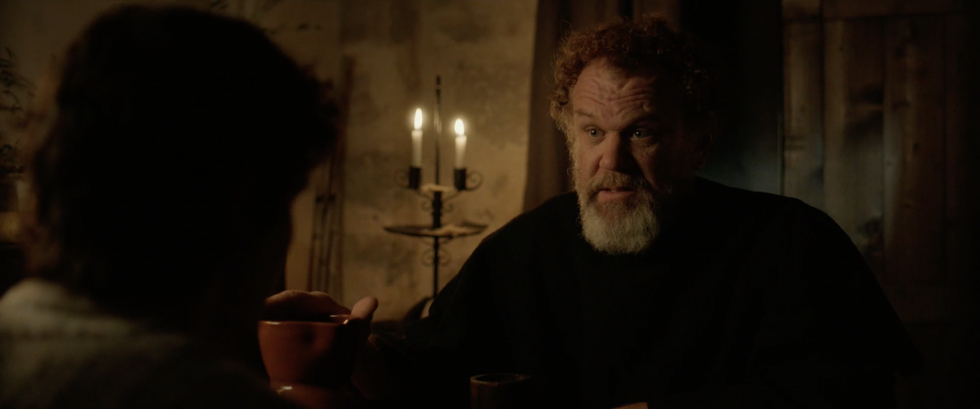
NFS: In the scenes with candles, did you use actual candlelight?
Tran: It was real candlelight for a lot of scenes. I created this candelabra light. I would rig three or four candles on a C-stand, and I would cove a showcard around it like a bounce. I would have that as a key, and then I would not have any backlights. I would place a candle in the background or use moonlight for separation between the wall and the character to create a little depth. Then, I would also maybe supplement with a Dedo into the bounce to maintain a consistent level of ambiance. This is because a candle flicker goes in and out, and I wanted to maintain a base-level for my exposure. I also made sure that I wouldn’t burn down any 14-century buildings!
"We devised this crazy rig where we would bounce 4Ks into the mirrors and then set them to get the angle that I wanted."
NFS: How did you light the church?
Tran: It was pitch black in there, but there were these two little windows that were located way up high. I didn’t have any condors, which is how I would normally light it, so I had to use mirrors. We devised this crazy rig where we would bounce 4’s into the mirrors and then set them to get the angle that I wanted.
NFS: How about the lighting for the Nick Offerman/Dave Franco castle chase scene?
QT: That scene is day-for-night. We were shooting at this amazing castle and I blacked out a lot of the windows with flags and then left a little bit of light coming through the window sheets to light up the room.
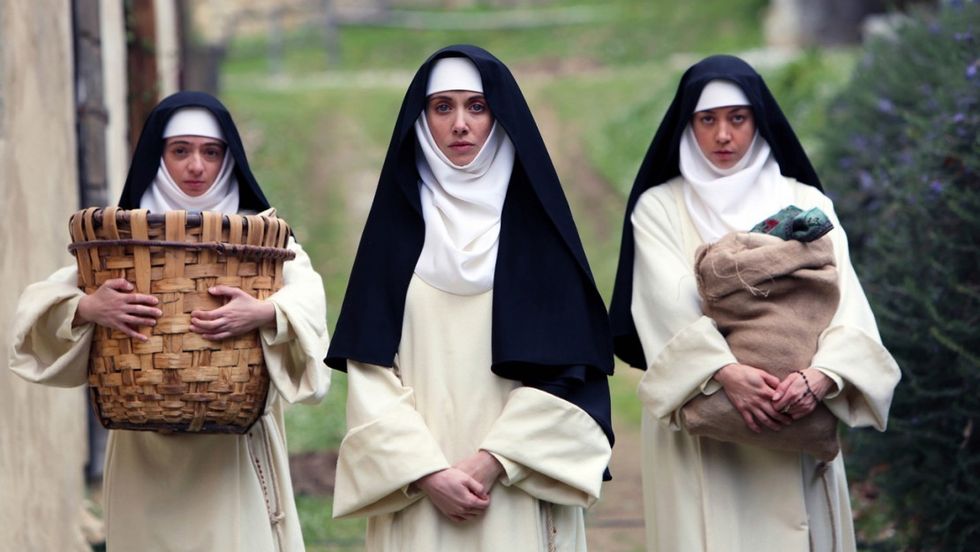
NFS: There were a lot of zooms in this project, which I thought was really interesting. What was the idea behind those?
Tran: Jeff really loves zooms. I noticed in his film Joshy that he used the zoom a couple times, and I thought that was cool because I’ve never used a zoom like that before in a movie. On a documentary, it’s good to be on a zoom so that you can quickly change and not interrupt the flow of what your subjects are up to at that point, but I’ve never used it in one of my narrative features.
"You might only have one shot to tell the whole story. "
I thought that was really exciting because it allowed me to think outside the box and step outside my comfort zone. Classical storytelling is really what I strive for, and as someone who still feels like an aspiring DP, I wanted to make sure that when we were zooming, there was a reason for it. I didn’t just want to go in and out and in and out and give the audience vertigo. Jeff and I would come to an agreement on when we would zoom and when we would not zoom.
NFS: How often do you try to pull tricks from documentary filmmaking, such as zooming, and use that in your narrative filmmaking, or vice versa?
Tran: All the time. I have shot a fair number of documentaries and I hail from a photojournalistic background, so for me, it was always about the economy of shots. You really might only have one shot to tell the whole story. I apply that in my narrative storytelling as well, and shooting documentaries helps keep me on my toes.
When I shoot documentaries, I try to make them look more cinematic while telling the story and not missing a beat. Then when I’m shooting narrative, I want to stay true to the actors' performances. In documentaries, they’re not acting; you don’t get a take two. You can’t tell your documentary subjects where to go, where to walk, where to hit a mark. So in narrative filmmaking, I try to allow that freedom for the actors when I can. I think that adds to a certain realism.
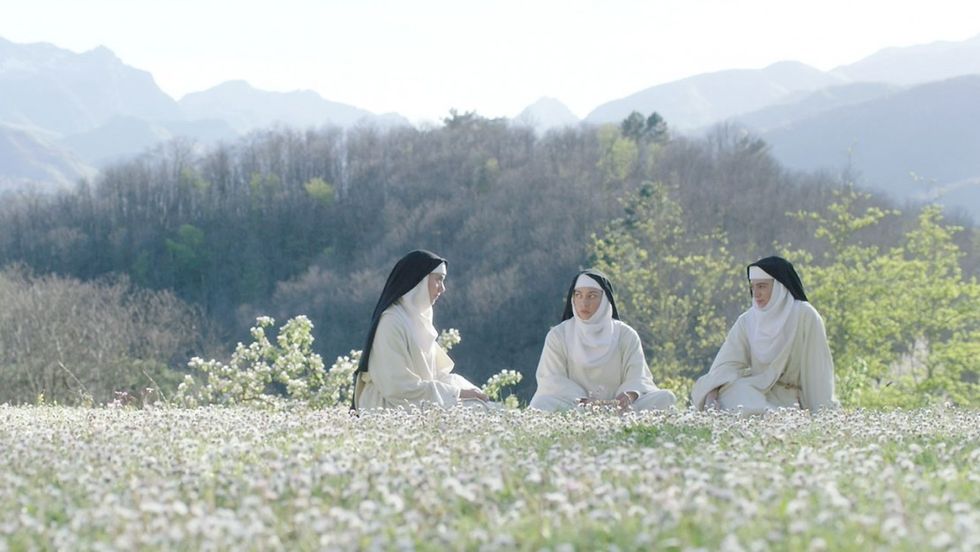
NFS: On your website, you say right up front that story is the biggest thing for you when you’re choosing a project. How do you decide which stories you want to do?
Tran: I love shooting family drama. I know that The Little Hours is an insane comedy, and I enjoy that as well, but honestly, I love people. I love understanding characters— I love learning about what they like to do, who they are, what they like to eat. I just love interacting with people. I’m very social, so for me, family dramas are where my heart is.
NFS: And Deidra and Laney Rob a Train, which you shot recently, very much falls in line with that idea. Plus, you had a unique filmmaker in Sydney Freeland, who is a transgender Native American woman. Do you try to seek out finding those voices?
Tran: Absolutely. I am a Vietnamese-American woman cinematographer with two children. I want to collaborate with other people whose stories resonate with me, since I’ve faced a lot of adversity growing up— racism, sexism, and what-have-you. I know this sounds really cliche, but I want to try to find stories that will impact people.
"Everything in the woods is all firelight and I used flame bars to key the actors. I used par cans to light up the forest. "
When I was growing up, my family was very, very poor. My parents fled from Vietnam and didn’t speak English. Growing up, I didn’t have a lot, but what I had was the cinema. I remember sitting down with my family and watching television, watching I Love Lucy, and a lot of that was situation-based, so you don’t have to speak English necessarily to understand what was happening. I have very fond memories of that, and I think that’s probably part of the reason why I try to gravitate towards crazy comedy, but also very dramatic, social stories that have an impact on society.
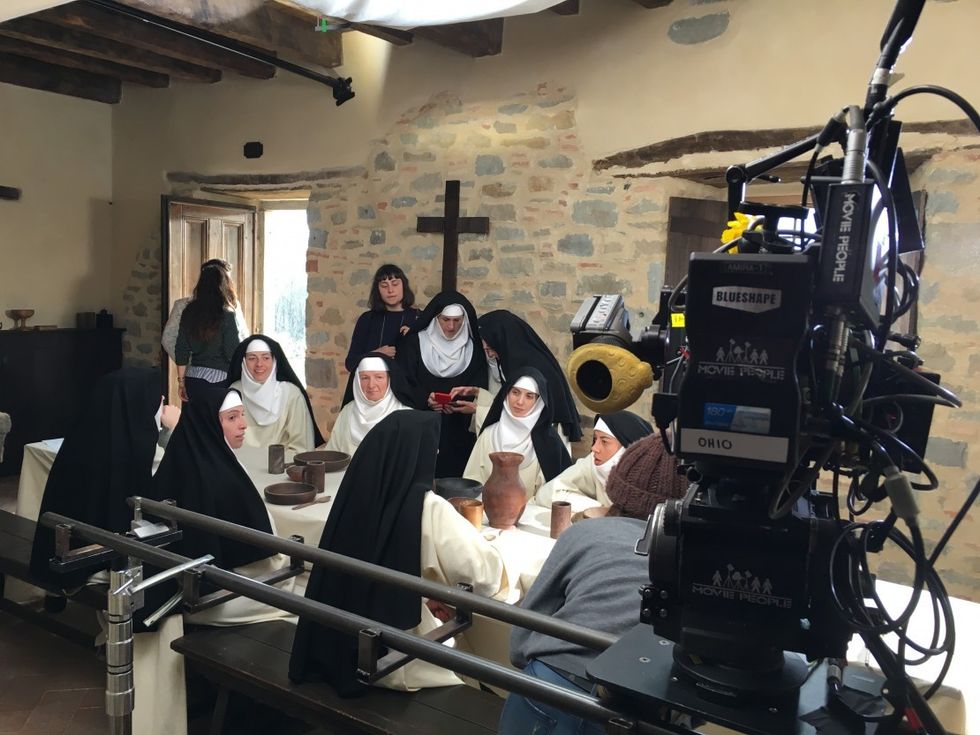
NFS: How do you feel it impacts you, as a Vietnamese-American woman, to be someone that’s so much different than the typical cinematographer?
Tran: It’s a very hard question. This is an issue that comes up a lot, and I’m not quite sure how to address it yet. It’s very controversial.
Up until now, I’ve been really just trying to be the best cinematographer I can be. It wasn’t until I got pregnant and had to pump on-set and had to take time off for my second baby that I became aware that I was a female cinematographer, not just a DP. Now my kids are growing up and I have full-time help so I’m able to focus and I’m able to travel again.
"Focus on being the best cinematographer you can be, but don’t be afraid to be a woman."
It’s only now that I realized, wow, those experiences of having children have really helped me be more aware, and to just pay attention to the stories more and to the characters in it. I've become much more empathetic to stories about families. I can really relate to the mothers in the stories, and the children, and I'm more sensitive to the husband or partner's perspective. I have always focused on story, story, story, but I feel that I have an even better grasp of human relationships as a result of experiencing childbirth and all the beauty, magic, but also the hardship that comes with growing a family. Since I spend so much time away from my family, I never take anything for granted anymore. I try to value everyone's time on set and work as efficiently as possible so that my crew can get back to their families and hug their little ones goodnight, even though mine are hundreds of miles away.
NFS: Do you have any advice for aspiring female DPs?
QT: Focus on being the best cinematographer you can be, but don’t be afraid to be a woman.
It's important to stay true to yourself. When I first started shooting, I tried to be "one of the guys." But as time went on, I realized that I didn't feel whole, and even though I was trying to be one of the guys, the guys didn't see me that way, so I stopped trying. Don't be afraid to speak your mind.
I have that motherly instinct towards my crew, and I'm very comfortable in my own skin these days, but I understand that it wasn't always this way and that it took years of honing my craft and building confidence. I used to be scared to tell a producer that I think something is unsafe, or that we really do need a certain piece of equipment because I didn't want to appear "difficult" or “bitchy," but now I know I am just doing my best to protect the crew and the film. Smart producers will recognize that and thank you for it.
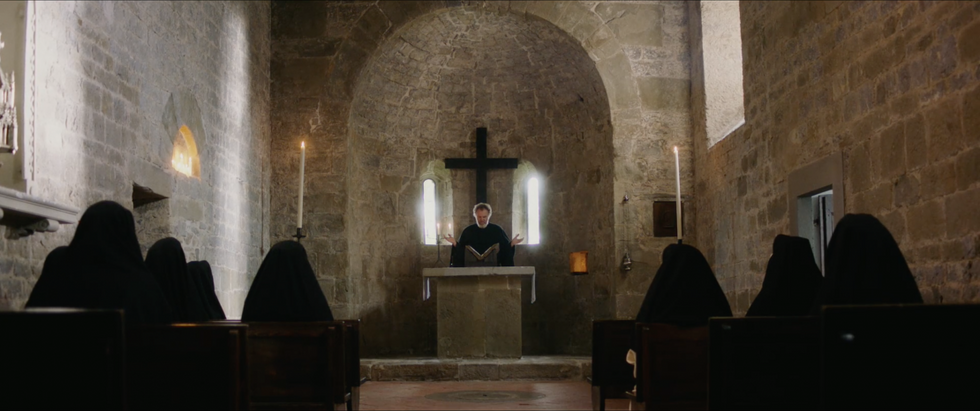
Tran: It's so hard to be a cinematographer, period, whether you're white, black, Asian, Hispanic, transgender, gay, or other. I try to not throw in the added complexities of being a minority and also a woman. If I don't get a job, I never blame my gender or my race. I like to focus on the art of my craft and stay as positive as possible; otherwise, you can create your own roadblocks.
And to aspiring DPs in general, no matter what project you’re working on, always, always try to do the best you can do and try to maintain a level of artistic integrity. You never know who’s going to see something. I shot this very, very low-budget movie when I first got out of film school and I got recognized for it and I got an agent through it.
NFS: Getting back to The Little Hours briefly before we finish: what was your favorite scene?
Tran: I think my favorite scene was the bonfire scene, because it was so effing crazy. Everything in the woods is all firelight and I used flame bars to key the actors. I used par cans to light up the forest.
I love handheld; it’s very natural for me as a medium. It’s just you. You go, you find a shot, you get it. And for that one, it was literally a dance, and I was really in my element at that point.
NFS: And finally, do you have anything coming out in the near future that you’re excited about?
Tran: Yes, I am currently shooting Alan Ball's new HBO drama series, Here, Now. It's an incredibly diverse cast— one of the characters is actually Vietnamese, which is so cool to me because I can totally relate. It's a dream come true, since American Beauty is one of my favorite films and Six Feet Under is still one of my all-time favorite TV shows. I am truly humbled.












